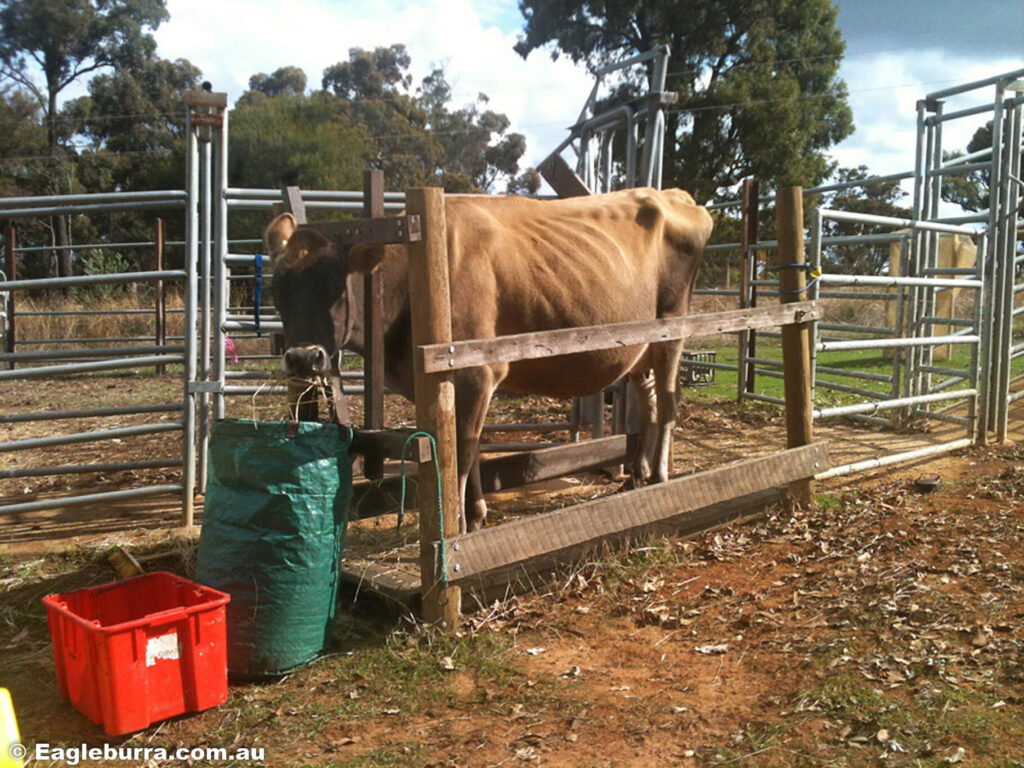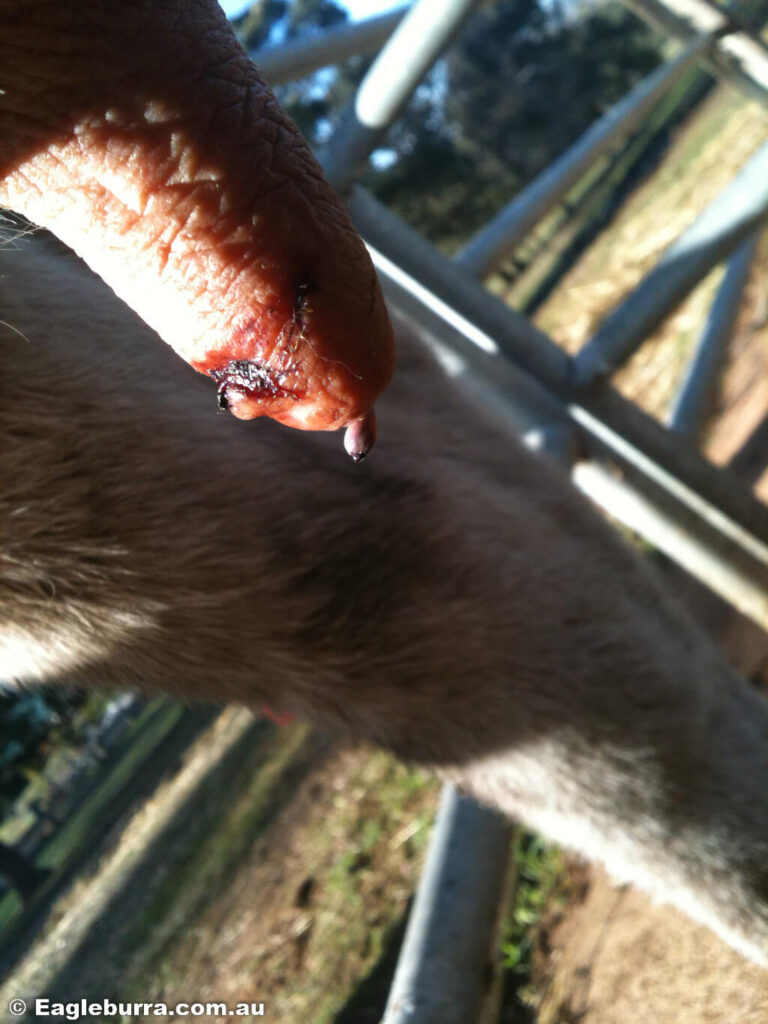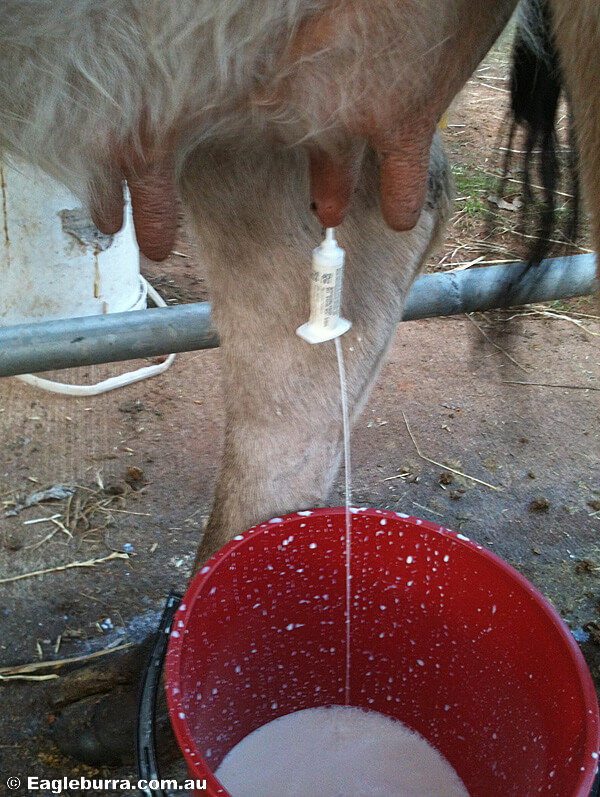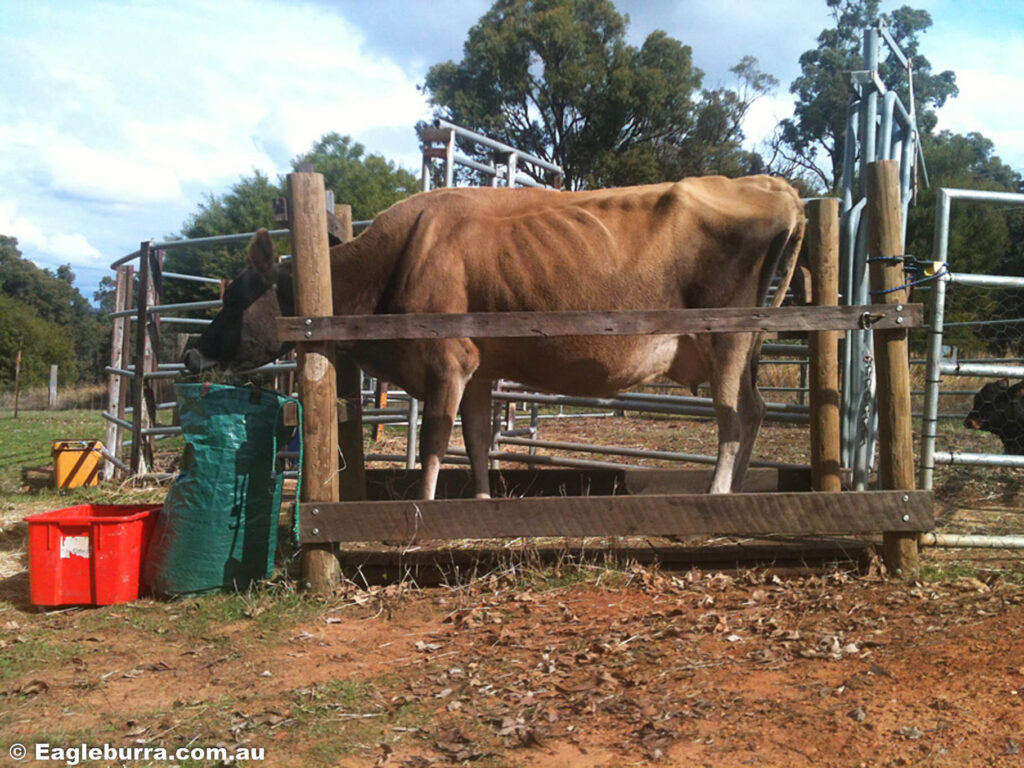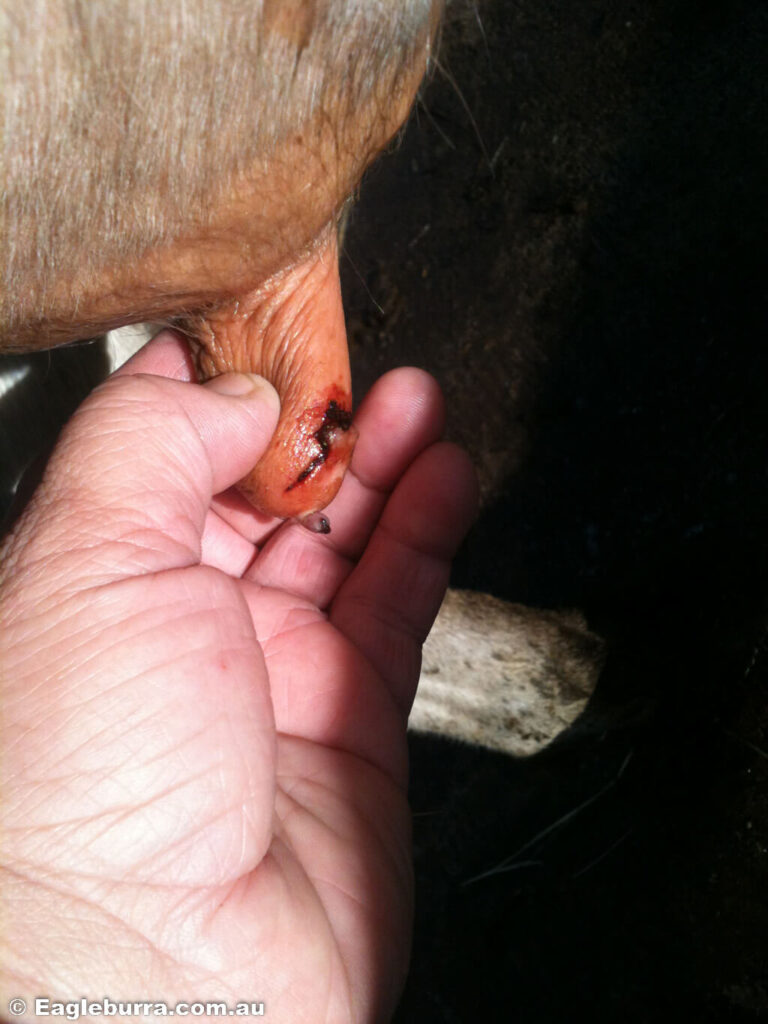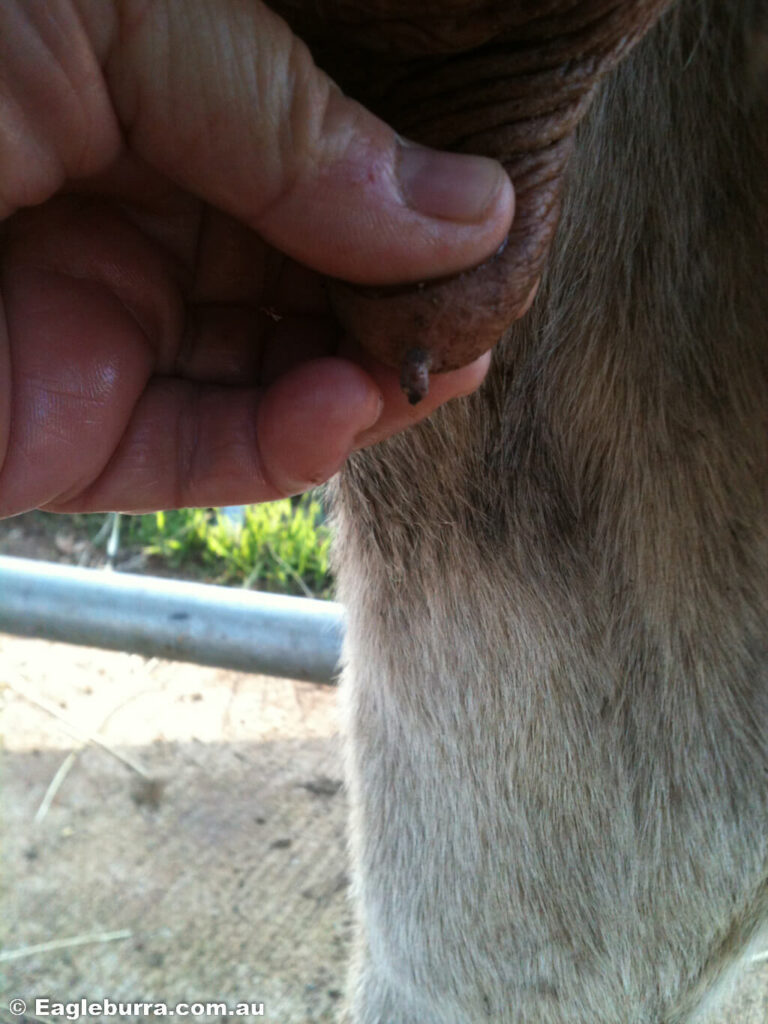Holly is still painfully thin in my eyes, but we are following vet advice and she is getting all the nutrition and groceries that she needs.
Our second week started off great with a gradual increase in milk production and a big increase in the cream line after I switched to completely milking out the biggest producing quarter (her right rear) and partially milking the left quarters, leaving the right front full for Bangers. Holly’s behaviour, demeanour and temperament are just brilliant, she is a pleasure to work with and to milk. She is not an overly friendly ‘pet cow’, but she is a brilliant house cow – very easy to move into the crush and has not tried to kick once during milking (unlike Charlotte who was quite adept at kicking me through the steel cattle panels of the crush while still locked in the head gate.)
Sunday: 4 litres
Monday: 3 litres (much more cream)
Tuesday: 3.5lts
Wednesday: 4.5ltrs
Thursday: 4.5lts
And then on Thursday evening after everything went so brilliantly, disaster struck 🙁 I was feeding Holly in the portable wooden milk stand to get her used to being in there with G and A being close by. Holly got a fright and tried to jump over the rail but slipped and fell down, seriously injuring the teat on her right rear quarter. It looks like she either stepped on or pinched her rear teat slicing some skin off in two thumbnail size sections 2-3mm thick. The lacerations themselves are not serious injuries – probably equivalent to bad calf teeth bites that should heal within a few days (as long as no infection obviously).
The problem was what looked like a small narrow hollow tube about 3mm long of…whitish-translucent thick skin/cartilage resembling soft fingernail (keratin) that was protruding from the teat orifice. It was getting dark and hard to see properly, but what it looked like was the internal tube had been squeezed out of the teat. I was able to squirt some milk out normally so it doesn’t appear to be damaged in that respect. I cleaned it up and covered the teat with unprocessed honey (a natural anti-biotic and healing agent), separated Holly and Bangers for the night and set about googling the problem (if we had a vet in town I would have called but we don’t and it took most of the night to google a little bit of information on this very rare type of injury).
The inside structure of the cow teat consists of the streak canal (ductus papillaris) which is the orifice that the milk flows out of. The streak canal is the main barrier against bacteria and infection. It is lined with a skin-like epidermis of keratin material that has antibacterial properties. This canal is normally kept closed by sphincter muscle that surrounds it – during milking the muscle relaxes opening the canal and allowing the milk to be released. When the canal is open (for up to an hour after milking), it allows harmful bacteria to enter the teat and cause mastitis in that quarter.
It is this internal streak canal that has been pushed outside of the teat – technically it is a teat canal prolapse, a very serious but normally rare injury. I called the vet first thing Friday morning, but due to multiple animal emergencies in the district, they were unable to get here until late evening. Friday was an incredibly stressful day as the vet I spoke to did not seem familiar with this type of injury at all, but as luck would have it the more experienced head vet also came out and he is nothing short of brilliant – and a truly dedicated animal lover.
The vet was able to push the prolapsed canal back inside with some difficulty and let much of the milk that had been sitting there for 24 hours flow out. The plan was for me to do the same thing as many times a day as possible, not to milk, but just to release some pressure and make sure the canal healed open. In normal circumstances, a teat cannula would have been inserted and bandaged on for a couple of weeks, but the swelling in the teat canal meant a cannula was too big and the lacerations further up the teat made this not the best option for healing the lacerations (with potential for further complications).
Holly was also given an IM injection of penicillin (to be continued for five days) and an intermammary dose of antibiotics. The verdict Friday night was that the teat canal would take several months to heal and mastitis is a very real risk (and will be an ongoing problem with this quarter), but that normal production should be possible after it is healed this lactation.
After seeing Holly, I had the vet check Miss B’s pony Raj as he has had runny manure on and off for three weeks – first from too rich hay, he improved when we put him on different hay, then next week it was runny again from the new green grass after the rains, again got better when we locked him up to control his intake to just hay but after letting him out on the grass again for a few hours it returned but locking him up with just hay didn’t reduce the water content that he was passing. A trip to the vet was planned for him after the weekend, but as it turns out, we are lucky to have had to call the vet to Holly as Raj had a belly full of sand and would not have gone much longer before he was a very sick little pony.
Raj was oil drenched (after being tranquilized because he was antsy at finally getting out of the yard which he hates) and given a painkiller to get him through the night. I spent the night checking him frequently but thank god he didn’t colic and was his normal self.
Not the best photos as they were taken on my mobile phone, the small nobbly bit at the end is the canal prolapse 🙁
